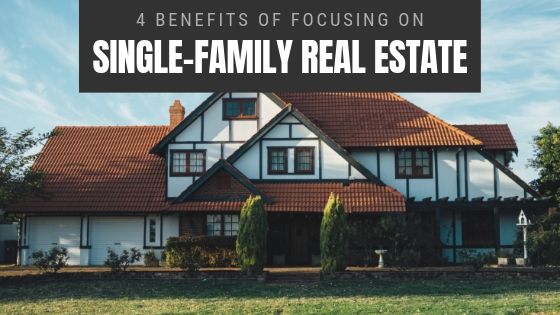Single-family real estate is a common investing option for those looking to get involved in real estate investing. More and more people are looking for single homes for rental purposes. There are certainly benefits to investing in multifamily when compared to single family, so you need to decide which option is best for you. If you’re interested or set on investing in single-family real estate, here are some of the benefits that go along with it.
The future looks good
For a variety of reasons, the future of single-family real estate investing is looking pretty good. One of the reasons is because the current unemployment rate is fairly low and is at the lowest it’s been for decades. When the unemployment rate is low, people are more likely to purchase single-family homes instead of renting. There is also currently a solid housing market, with lower prices and plenty of opportunity for investors and residents alike to find something that fits what they’re looking for.
Less correlation to interest rates
While the real estate market will always have some correlation to interest rates, single family markets are historically less sensitive to a rising interest rate environment than multifamily. While rates inevitably affect the affordability of housing, a strong economy can often keep the single-family market buoyant while multifamily prices are very closely tied to the spread between CAP rates vs. the cost of financing.
Lower initial investment
For someone looking to invest in multi-family properties, they’ll quickly realize that the cost to purchase or construct an apartment complex is much higher than focusing on a single-family homes. If you’re starting from scratch, you are much more likely to find something of smaller size in the single-family domain.
Potential for inefficiency
There are over 70 million single family homes in the US vs. an estimated 500k apartment buildings. Thus, the probability of finding a “mispriced” asset in one market vs. the other is 140:1.
There is also significantly more competition for larger multifamily assets. The probability of finding inefficiencies is inversely correlated to the size of the asset.
To illustrate the consequence of this, cap rates (income (NOI) / value) for institutional class properties in the U.S. are often 200 to 500 basis points less for equivalent assets by quality.
